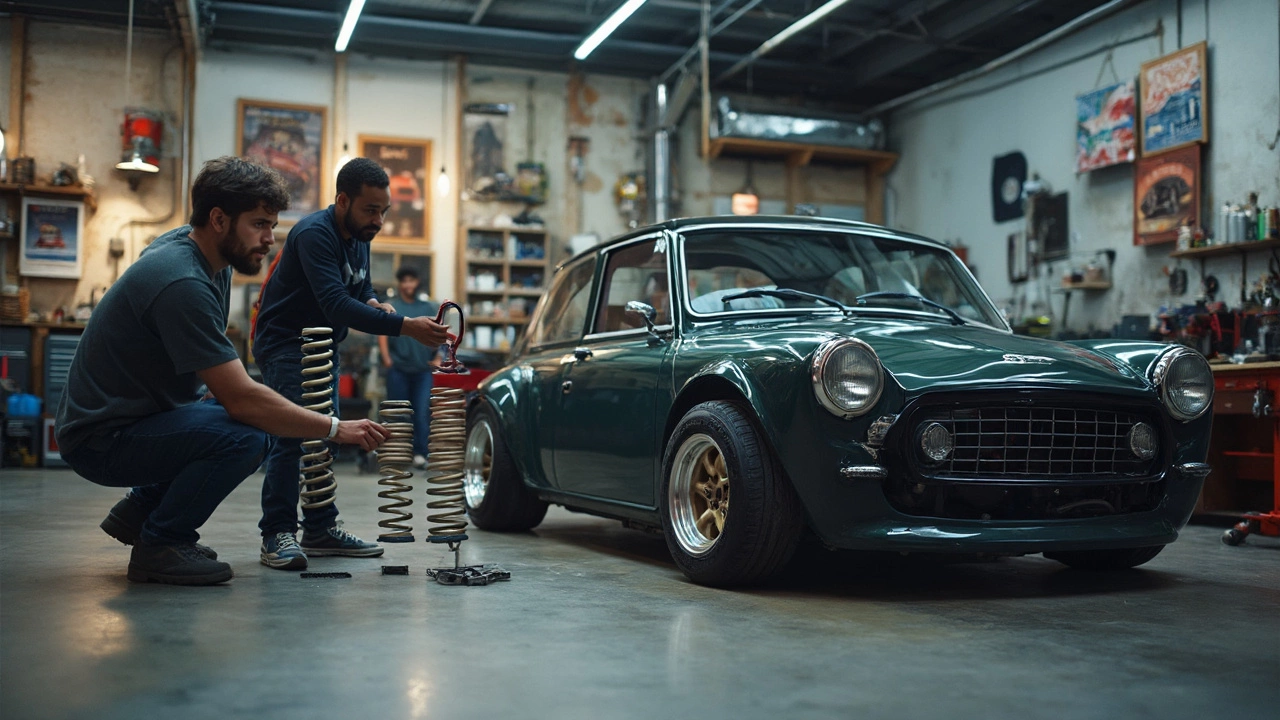Car Lowering Safety: How to Keep Your Ride Safe and Fun
Thinking about dropping your car a few inches for a sleek look? It looks great, but it also changes how the car behaves. Before you pop a set of lowering springs, you need to know the safety side so you don’t end up with a ride that feels off‑track or wears out fast.
What Happens When You Lower a Car?
When you lower a vehicle you’re basically moving the chassis closer to the ground. That changes the suspension geometry – camber, caster, and toe angles all shift. The result is a lower centre of gravity, which can improve cornering grip, but only if the rest of the setup can handle the new angles. Stock shocks and springs are tuned for the factory ride height, so swapping just the springs often leads to a harsher ride, reduced wheel travel, and quicker wear on components like bushings and ball joints.
Key Safety Concerns and Simple Fixes
1. Reduced Travel and Bottoming Out. With less room for the suspension to move, you’re more likely to hit the bump stops on bumps or potholes. Installing a set of adjustable coil‑overs or at least upgraded shocks with a softer low‑speed setting can give you a little extra travel and keep the ride smoother.
2. Scraping the Underside. A lower stance means you’re closer to speed bumps, curbs, and road debris. Adding a front splitter or under‑body guards helps protect the bottom of the car, and always watch your approach angles in tight spots.
3. Alignment Changes. Lowering often adds negative camber, which can cause uneven tire wear if not corrected. A proper alignment after the install is a must – have a shop check camber, caster, and toe and adjust to specs for your new height.
4. Handling Tweaks. The car may feel more responsive, but the trade‑off can be a tighter turning radius and a stiffer feel on the road. If you notice the car pulling to one side or feeling twitchy, consider upgrading the sway bar to balance body roll and improve stability.
5. Legal and Insurance Issues. Some regions have rules about how low a vehicle can sit, especially if it affects headlights or bumpers. Check local regulations and inform your insurer; an unapproved mod could void coverage after an accident.
All these points sound like a lot, but you don’t need a full rebuild to stay safe. Start with a quality set of lowering springs that match your car’s weight, follow up with a proper alignment, and upgrade the shocks if the ride feels too harsh. Keep an eye on tire wear – uneven stripes are a clear sign the geometry is off.
Another easy win is to add a set of polyurethane bushings. They’re tougher than rubber and resist the extra stress that comes with a lower stance. They also help keep wheel movement predictable, which translates to steadier handling on the street.Finally, don’t ignore the basics. Regularly check bolt torques, especially on suspension mounting points. Lowering increases stress on these bolts, and a loose nut can lead to a serious safety issue.
Bottom line: lowering can give your car a killer look and better cornering, but only if you back it up with the right supporting mods and a good alignment. Treat the lower ride height as a system, not just a visual tweak, and you’ll enjoy the style without sacrificing safety.
Thinking about lowering your car? This article unpacks the safest method and why doing it right matters. From choosing the right springs to what can go wrong if you cut corners, find out what really keeps your car balanced and your ride safe. Get practical tips, real-world advice, and some must-know facts before you grab the tools. Stay safe while getting that killer look and improved handling. Lower your ride the smart way.

